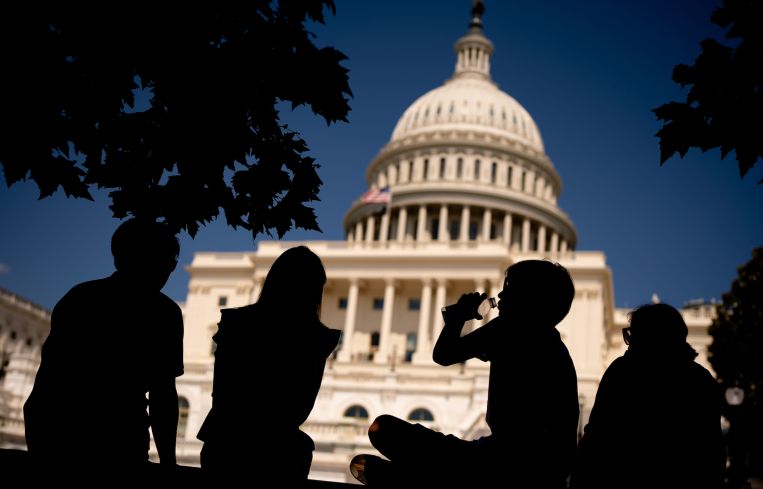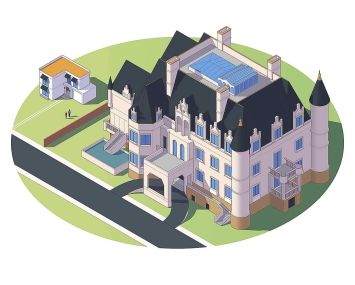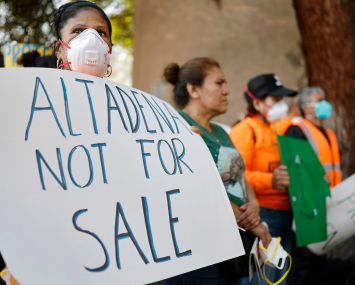Extreme Heat and Tourism-Driven Hospitality
Behind every glossy photo of your friend’s Roman holiday is a mountain of sweat
By Anna Staropoli September 18, 2024 12:45 pm
reprints
The beloved, beautiful Mediterranean has long been a hotbed for summer tourists, but that hotbed accolade is en route to a more literal interpretation. Last year, scientists confirmed the summer of 2023 as the hottest on record globally, with the summer of 2024 shaping up to surpass that ranking. Extreme heat may not only shift the planet, but it may also affect travel patterns and tourist-driven real estate.
Historically, heat hasn’t been associated with natural hazards or disasters. “We think of it as a short-term, summer-driven event, but not something that is really majorly impacting our lives,” said Deborah Brosnan, president and founder of Washington, D.C.-based environmental consultancy Deborah Brosnan & Associates. “But it is becoming more so.”
As summer travelers face additional risks of both heat waves and heat-accelerated natural disasters — wildfires, hurricanes, tornadoes — climbing temperatures may breed a parallel rise in alternative destinations, shoulder-season getaways and heat-specific infrastructure and amenities. Summer’s temperatures therefore challenge the hospitality industry to adapt, though these changes will vary from destination to destination.
“Every lodging is going to be effectively disadvantaged by heat in some capacity,” said Nick Cavanaugh, CEO and founder of California-based Sensible Weather. The company sells a type of insurance policy against extreme heat and other inclement weather that can ruin a vacation.
Given the universal impacts of heat, no one type of hospitality –— hotels, Airbnbs, short-term rentals — will necessarily prove better off than another. Rather, the difference is what that type of hospitality will offer, said Brosnan.
“So, if you don’t have air conditioning, then most people are not going to want to stay there because it’s uncomfortable and it can get dangerously hot,” he said.
Anyone who visited Europe recently understands this sentiment: The continent’s overarching lack of air conditioning presents a significant roadblock to any vacation. Many European countries have notoriously avoided air conditioning, and Brosnan recently came across travelers who ended their Italian vacation early because of the heat.
In fact, Italy’s weather has become so drastic that the number of heat-related emergency care appointments increased by 20 percent in Italian cities including Florence, Rome and Venice, according to The Guardian. (The weather hasn’t stopped visitors, however; The Guardian also reported an annual increase in foreign tourists of 2.5 percent.)
Similarly, Athens, Greece, has long attracted tourists, but this year, the Acropolis — perhaps the city’s most essential tourist attraction — temporarily shut down due to temperatures that surpassed 104 degrees Fahrenheit — not exactly ideal for a stroll through the city.
Unfortunately, the United States’ major tourist cities haven’t fared much better. Cities in general tend to exceed their surrounding rural areas by 10 to 15 degrees, said Brosnan, though additional reports increase that potential difference by up to 20 degrees. This variance is attributed, in part, to cities’ general lack of tree coverage and shade.
In the U.S., San Francisco currently ranks as the country’s least air conditioned large city, while Washington, D.C., recently endured a historic heat wave, with multiple days in triple-digit temperatures. This heat could dissuade visitors from future summertime trips, despite the patriotic tourist draw of the nation’s capital around Independence Day.
“It can get very hot in Washington, D.C., for the Fourth of July,” said Cavanaugh. “That might end up being a very undesirable destination, even though that happens to be when the Fourth of July is.”
“The season for tourism will shift,” echoed John Shapiro, a former geographer and now a professor in the Pratt Institute’s architecture school. “You know it’s happened, or happening, when all of a sudden something is chic,” such as when the focus of travel conversations shift to places with cooler climates. “The moment people start talking about the art scene in the Hudson Valley, that’s when you know they’re not going to the Hamptons.”
Shapiro believes more reports and articles will soon emerge about the wonders of traveling in September and October, or April and May. Case in point: Florida — a notoriously hot state — peaks with wintertime visitors.
“Everyone knows you don’t go to Florida in summer,” said Shapiro.
Likewise, he predicted a rise in indoor attractions and suggested a positive future for America’s dwindling malls, which are indoors and air conditioned. The 1970s and ’80s phenomenon of entertainment-focused malls with ice skating rinks, movie theaters and other indoor attractions may resurge, he said.
For those seeking an outdoor summer getaway, however, the most attractive tourist destinations may be on the coast, where the ocean breeze cuts through scorching summer temperatures. Yet, traveling to the coast presents a contradiction, as waterfront locales are cooler but often more endangered by rising seas or droughts, said Shapiro.
Yet those oceans may not be as refreshing as expected. Some of the beaches in the Caribbean and Florida are no longer cool, said Brosnan, who often does work in the Caribbean.
(Other at-risk destinations include Palm Springs, Calif., and similar desert communities, “but since they’ve always been hot, people basically expect them to be hot,” said Cavanaugh.)
Given the higher temperatures, the most desirable stays for travelers may be those not only with the most amenities, but also with the most lenient policies.
Airbnb, for instance, lets hosts choose how strict they are with reservations and cancellations. So, in the event of a weather-related trip impediment — such as an encroaching heat wave — either the homeowner or the traveler takes on that financial risk. Compared to Airbnb sites, hotels typically allow guests more flexibility with cancellations, said Cavanaugh.
But it’s not just summer temperatures that present risks for hospitality owners. Winters are likewise getting hotter, and as travel patterns adapt to new temperatures, so must travel infrastructure — particularly single-purpose buildings such as ski lodges.
“When you think about how long it’s taking to build tourist destinations — and they’ve basically been optimized for a stationary climate — when that climate starts to shift, there’s basically a lot of investment already at play and already at risk,” said Cavanaugh, who noted the importance of monetizing a building year-round.
Luckily, many ski towns and resorts have already widely invested in summertime activities. Resorts across the country — from Killington, Vt., to Park City, Utah — have developed multi-season amenities. These include the likes of hiking and biking trails, mountain slides, water slides, chairlift rides and more. That way, if any given winter proves too warm for a ski resort’s trademark activity, the resorts have options for attracting an off-season clientele.
“If you’re going to have a short winter season and you can no longer prime the pump with high rates and only a limited number of months, they’re going to invent,” said Shapiro.
Of course, there’s always the fallback for infrastructure — whether it’s a hotel, a ski lodge or another recreational facility such as a golf course — to shut down altogether during a heat wave. Some of Cavanaugh’s partners in Texas close in July, as extreme heat proves a health risk. For owners, however, shuttering means a financial setback.
“If that simply too hot window expands, how much revenue is lost at that destination because it just eats up the time when people would be visiting there?” said Cavanaugh.
To prepare both buildings and cities for heat, nature-based solutions — Brosnan’s go-to recommendation — may then prove invaluable, as they tend to be relatively inexpensive yet effective. Likewise, innovative architectural designs can circumvent the emissions from air conditioning with designs for increased airflow, said Brosnan.
Urban design improvements in downtowns can similarly offset the effects of heat. Additions may include new varieties of pavement or water features like fountains, which create microclimate adjustments, said Shapiro.
“How does hospitality adapt?” said Cavanaugh. “They have to be forward-looking, and that’s new financial solutions, new physical solutions and also new investments, thinking outside the box.”
Take the Italian city of Bologna, which compensates for the country’s lack of consistent air conditioning with historic porticos. These centuries-old structures canopy the city’s archways, offering shade directly from the street. It’s a design that preceded air conditioning, but one that makes the city bearable in the open air.
Anna Staropoli can be reached at astaropoli@commercialobserver.com.


